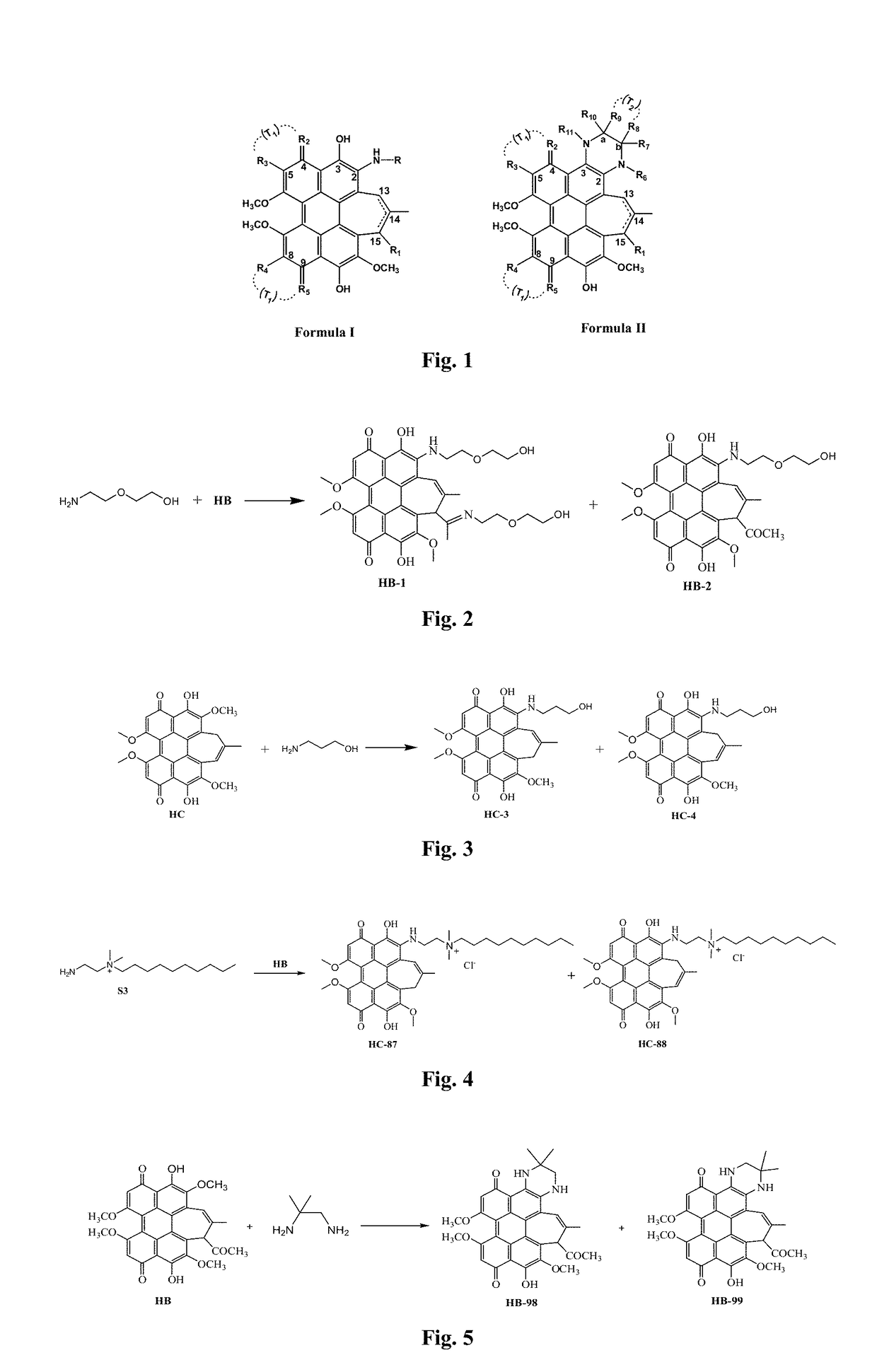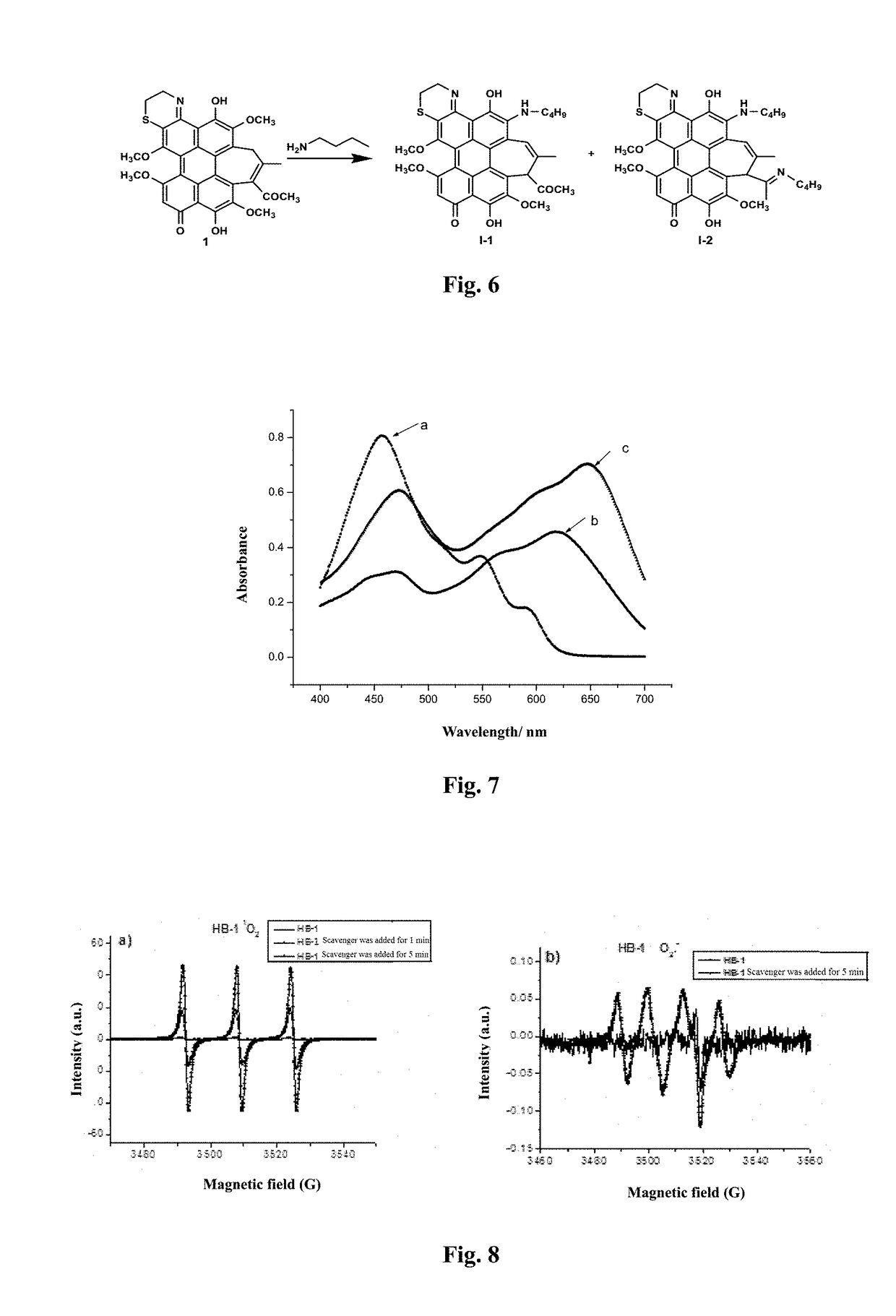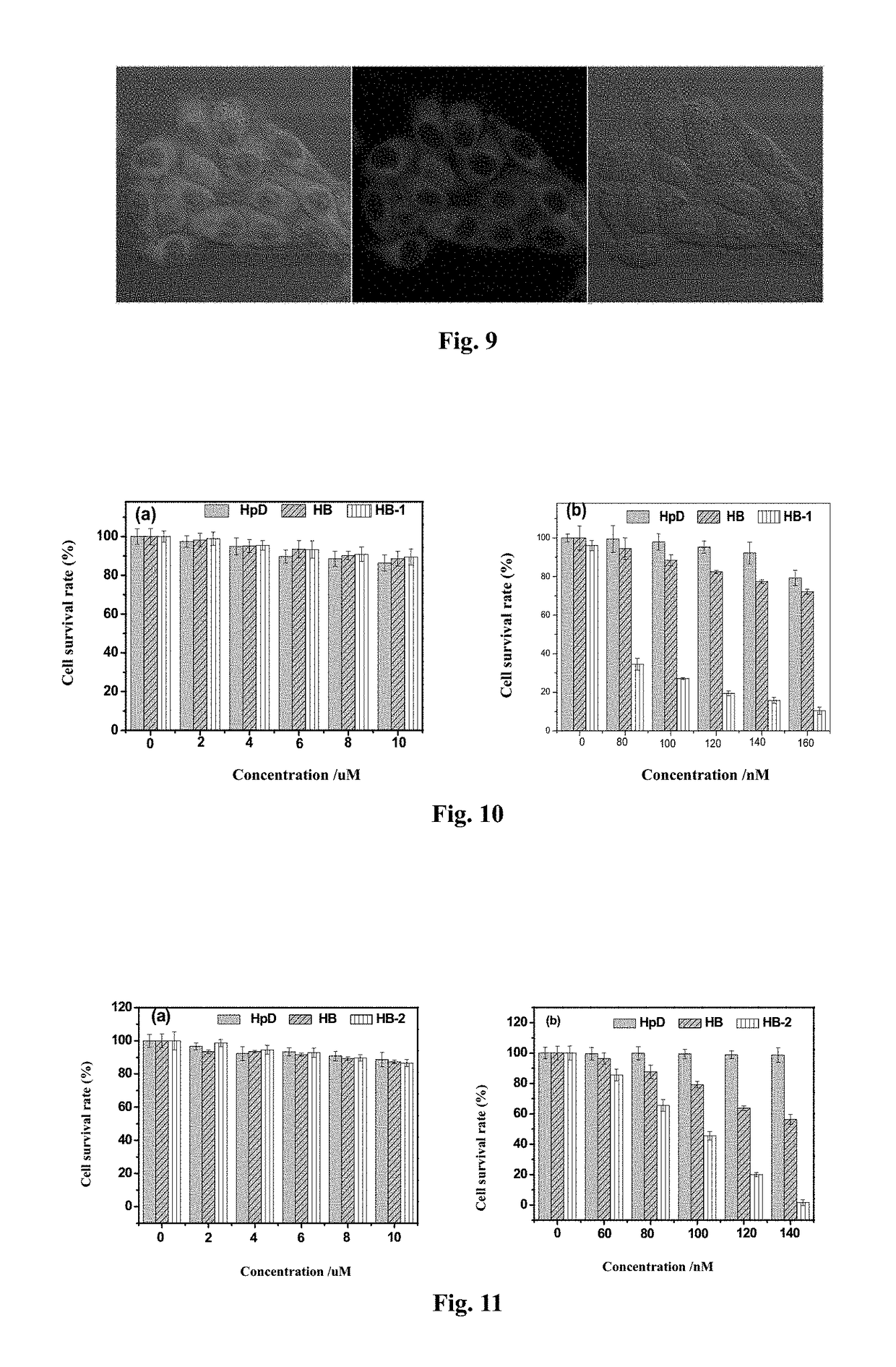Monosubstituted or polysubstituted amphiphilic hypocrellin derivative, and preparation method and application thereof
- Summary
- Abstract
- Description
- Claims
- Application Information
AI Technical Summary
Benefits of technology
Problems solved by technology
Method used
Image
Examples
example 1
[0051]Extraction of hypocrellin A (HA): 100 g of hypocrellin was pulverized by a pulverizer, and continuously extracted with 1,000 ml of acetone as a solvent in a Soxhlet extractor for one day until nearly colorless. The extract was filtered to remove a small amount of infiltrated solid insoluble substances, spin-dried to remove acetone, dissolved in 500 ml of dichloromethane, and washed four times and each with 400 mL of distilled water. The organic layer was separated and spin-dried, the solid residue was washed five times and each with 100 mL of petroleum ether, naturally air-dried, and then recrystallized with chloroform-petroleum ether twice. The resulting crystal was the target product HA with a purity of more than 98%. Highly purified HA can be obtained by further purification using thin layer silica gel chromatography with petroleum ether:ethyl acetate:anhydrous ethanol (30:10:1) as a developer.
[0052]Preparation of hypocrellin B (HB): the HB was prepared by dehydrating the H...
example 2
[0054]The derivatives containing a long chain quaternary ammonium salt according to the invention were prepared using the following general methods, which are described by taking H2NCH2CH2—N+(CH3)2(C10H21) as an example.
[0055]Preparation of an intermediate S1: N,N-dimethyl ethyldiamine (4.4 g, 0.05 mol) and diethyl carbonate (7.10 g, 0.06 mol) were mixed in a 100 ml round-bottomed flask, kept at 70° C. for 48 h, and then distilled under reduced pressure to obtain 7.20 g of a pale yellow liquid with a yield of 89%. 1H NMR (CDCl3, δ, ppm): 5.45 (s, —NH—, 1H), 4.10 (d, J=6.5 Hz, —CH2O, 2H), 3.24 (s, —NH—CH2—, 2H), 2.39 (m, —CH2N, 2H), 2.22 (d, J=1.5 Hz, CH3NCH3, 6H), 1.23 (t, J=6.5 Hz, —CH2CH3, 3H).
[0056]Preparation of an intermediate S2: the intermediate S1 reacted with 1-bromodecane (15.25 g, 0.05 mol) at 100° C. for 48 h for 72 h. The crude product was recrystallized with acetone-diethyl ether (1:1) to obtain a total of 15.83 g of a white crystal 2 with a yield of about 68%. 1H NMR ...
example 3
[0058]Preparation of an aminoethyl glycol-modified hypocrellin derivative (R=—CH2CH2OCH2CH2OH): the synthesis route as shown in FIG. 2: Hypocrellin B (HB) (100 mg, 0.18 mmol) and aminoethyl glycol (0.40 g, 4 mmol) were dissolved in 20 mL of anhydrous acetonitrile, fully mixed, heated to 50° C. under nitrogen protection, and stirred in dark for 10 h. On completion of the reaction, the solvent was removed by rotary evaporation. A blue black solid residue was dissolved in 200 mL of dichloromethane, and successively washed with 100 mL of diluted aqueous hydrochloric acid solution once and with distilled water twice. The organic layer was dried with anhydrous magnesium sulfate, and filtered, and then the organic phase was spin-dried to obtain a crude product. The resulting crude product was further separated by silica gel chromatography with acetone:ethyl acetate (volume ratio: 1:1) as a developer to respectively obtain two blue black solid products with Rf values respectively being 0.80...
PUM
| Property | Measurement | Unit |
|---|---|---|
| Temperature | aaaaa | aaaaa |
| Temperature | aaaaa | aaaaa |
| Length | aaaaa | aaaaa |
Abstract
Description
Claims
Application Information
 Login to View More
Login to View More - R&D
- Intellectual Property
- Life Sciences
- Materials
- Tech Scout
- Unparalleled Data Quality
- Higher Quality Content
- 60% Fewer Hallucinations
Browse by: Latest US Patents, China's latest patents, Technical Efficacy Thesaurus, Application Domain, Technology Topic, Popular Technical Reports.
© 2025 PatSnap. All rights reserved.Legal|Privacy policy|Modern Slavery Act Transparency Statement|Sitemap|About US| Contact US: help@patsnap.com



